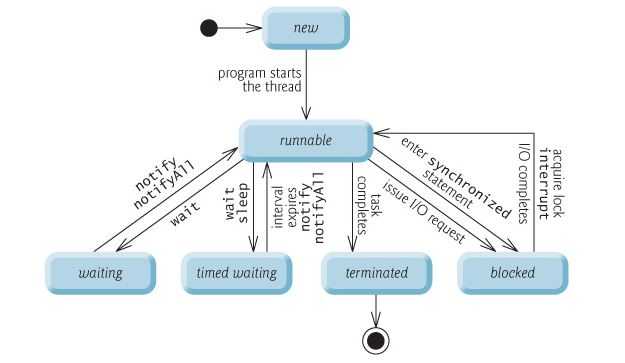18.2. Processes & Threads
On the OS level there are two most common units of execution:
- processes
- threads
Process
A process has a self-contained execution environment. In particular, it has its own memory space!
It takes longer to set up and it is usually a synonym for program/application.
Processes can communicate via Inter Process Communication (IPC) protocols supported by the OS. These are
- pipes,
- sockets.
The JVM is, in general, a single process.
Thread
We can understand a thread as a "lightweight process".
Threads exist within a process and every process has at least one thread.
Threads share the process's resources, including memory and open files. Because of that, creating a new thread requires fewer resources than creating a new process.
In Java, a program starts with a single thread, the main thread, but can create new ones.

Thread states
In Java, the life cycle of a thread is controlled by the JVM.
- New: a thread which has not yet started.
- Runnable: a thread which is executing in the Java virtual machine but may be waiting for other resources from the operating system.
- Blocked: a thread which is waiting for a monitor lock to (re)enter a synchronized block/method.
- Waiting: a thread which is waiting for another thread to perform a particular action.
- Timed Waiting: a thread which is waiting for a specified amount of time.
- Terminated: a thread which has completed execution.
Thread types
We distinguish between two thread types.
User threads
- These are high-priority threads.
- The JVM will wait for any user thread to complete its task before terminating it.
- E.g., the main thread.
Daemon threads:
- These are low-priority threads.
- The JVM will terminate all daemon threads when all user threads terminate.
- Their only role is to provide services to user threads.
- E.g. garbage collector.
